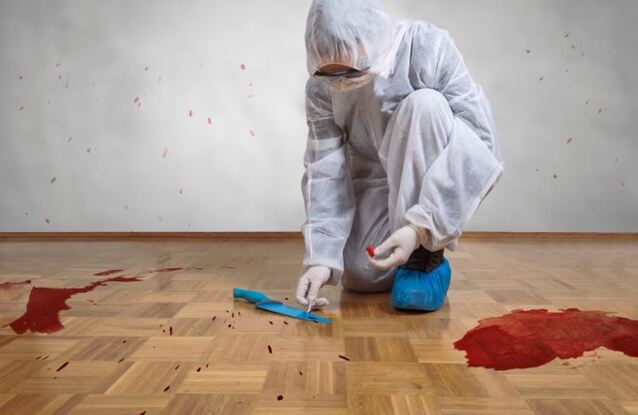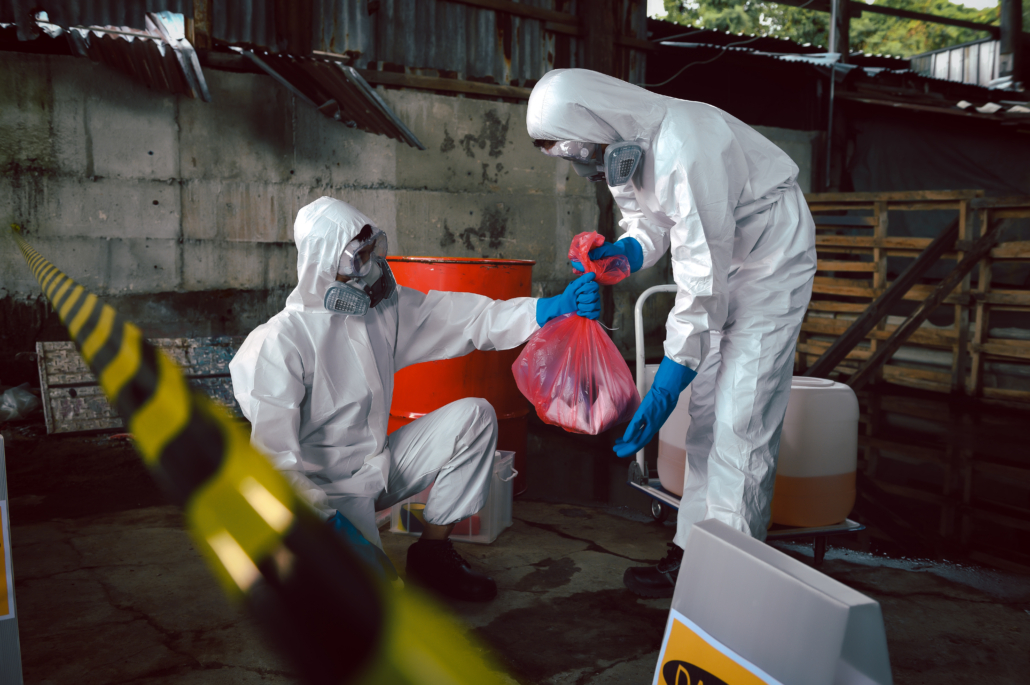Flood Damage Restoration: Quick and Effective Healing for Your Home
Flood Damage Restoration: Quick and Effective Healing for Your Home
Blog Article
Professional Biohazard Cleaning and Purification for Blood, Bodily Fluids, and Hazardous Products
In the world of biohazard cleaning and decontamination for blood, physical liquids, and unsafe products, accuracy and know-how are paramount. The potential health and wellness dangers connected with direct exposure to biohazards emphasize the essential need for meticulous handling and extensive clean-up. Specialized training furnishes experts with the understanding and abilities needed to address these hazardous situations effectively. However, it is not just concerning tidying up; the relevance of using appropriate decontamination methods can not be overstated. As we browse the complex landscape of biohazard clean-up, recognizing the subtleties of policies, conformity, and the customized devices at play ends up being crucial in making certain a secure and detailed decontamination process.
Health Risks of Biohazard Exposure
Direct exposure to biohazards positions significant health and wellness risks that can lead to extreme effects for areas and people alike. Biohazards encompass a vast array of organic compounds, consisting of blood, bodily fluids, mold, microorganisms, infections, and other potentially contagious products. When individuals enter into call with these biohazards, whether via mishaps, inappropriate handling, or ecological direct exposure, they deal with the danger of having major ailments or conditions.
Among the primary health and wellness dangers related to biohazard direct exposure is the transmission of contagious conditions. Bloodborne virus such as HIV, liver disease B and C, and numerous microorganisms can be existing in biohazardous products, posing a direct risk to human health and wellness. Breathing in airborne biohazards like mold and mildew spores or entering into call with contaminated surface areas can likewise bring about respiratory problems, allergies, and various other damaging health results.
Furthermore, biohazard direct exposure can have long-lasting wellness effects, with some conditions manifesting years after the initial contact (Blood Cleanup). Therefore, it is crucial to prioritize correct biohazard cleaning and purification to minimize these wellness threats and ensure the security of communities and individuals

Specialized Training for Biohazard Cleaning
When it involves dealing with biohazard cleaning successfully and safely, specialized training plays an essential duty in ensuring appropriate decontamination treatments are adhered to. Biohazard clean-up requires certain understanding and abilities to effectively alleviate risks related to bloodborne virus, bodily fluids, and hazardous materials. Professionals learnt biohazard cleanup go through extensive guideline on just how to securely take care of, remove, and get rid of biohazardous materials to stop contamination and direct exposure.
Specialized training for biohazard clean-up covers a variety of essential topics, consisting of proper individual protective equipment (PPE) use, bloodborne microorganism understanding, purification strategies, and dangerous waste disposal methods. Individuals learnt biohazard cleaning are outfitted with the required expertise to examine contamination degrees, recognize prospective dangers, and execute suitable cleanup treatments in conformity with regulative criteria.
Continuous training and education and learning are paramount in the area of biohazard cleaning to stay updated on the most up to date decontamination innovations, safety and security procedures, and regulations. By purchasing specialized training, biohazard clean-up experts can properly react to emergency cleaning circumstances and safeguard both public wellness and the environment.
Relevance of Correct Decontamination Strategies
Making use of correct decontamination methods is important in biohazard cleaning to effectively remove unsafe products and decrease health dangers. Efficient decontamination not just makes certain the elimination of noticeable traces of blood, bodily liquids, and various other biohazards however additionally targets unseen virus that might pose severe health threats otherwise appropriately eliminated. By following strict decontamination protocols, educated specialists can considerably lower the danger of exposure to harmful microorganisms, infections, and bacteria that might result in infections or diseases.
Appropriate purification strategies entail the usage of customized devices and anti-bacterials that are specifically created to counteract biohazards effectively. Extensive cleaning and disinfection of contaminated areas are important to prevent the spread of microorganisms and ensure a secure setting for occupants. Additionally, the appropriate disposal of biohazardous waste complying with decontamination procedures is essential in avoiding contamination of various other surface areas or individuals.

Tools and Devices for Safe Cleaning
When dealing with blood, physical fluids, or dangerous materials, biohazard cleaning professionals count on specialized gear to lessen direct exposure dangers and extensively sanitize the afflicted area. Additionally, biohazard cleansing sets containing anti-bacterials, absorptive materials, and biohazard bags are made use of to securely contain and get rid of of polluted items.
Advanced cleansing devices like hospital-grade anti-bacterials, HEPA-filtered vacuums, and fogging devices are used to sterilize surface areas and eliminate biohazards efficiently. Specialized devices such as sharps containers and biohazard garbage disposal bins are used to safely manage sharp objects and click this link biohazardous waste products. By utilizing the ideal devices and tools, biohazard cleansing professionals can guarantee a detailed cleaning process that focuses on security and reduces health and wellness risks for both workers and owners of the damaged area.
Regulations and Conformity in Biohazard Cleansing
Appropriate adherence to guidelines and compliance standards is paramount in biohazard cleaning to guarantee the safety of both employees and the environment. Federal government agencies such as OSHA (Occupational Safety And Security and Health And Wellness Administration) and the EPA (Environmental Security Agency) have developed specific standards for biohazard cleaning treatments to decrease wellness dangers and environmental contamination. These guidelines cover a range of facets consisting of the handling, transport, and disposal of biohazardous products, along with the necessary training and protective devices required for employees included in the clean-up process.
Biohazard cleansing companies must remain up-to-date with these policies to ensure that their operations fulfill the required safety criteria. Failure to abide by these policies can cause severe consequences, including penalties, lawsuit, and threatening the wellness of people and the atmosphere. By following rigid regulations and compliance procedures, biohazard cleaning business can effectively mitigate risks and make sure a safe and detailed clean-up procedure for all celebrations included.
Verdict
In final thought, biohazard cleansing and decontamination call for published here specialized training, appropriate strategies, and adherence to policies. Direct exposure to blood, bodily liquids, and unsafe products poses considerable wellness risks, making it crucial to utilize the appropriate tools and tools for safe clean-up. By following stringent protocols and standards, professionals can properly alleviate the risks associated with biohazard direct exposure and guarantee the safety and security of both themselves and others.
As we navigate the detailed landscape of biohazard cleanup training and certification biohazard clean-up, recognizing the nuances of policies, conformity, and the specific devices at play comes to be imperative in making sure a secure and comprehensive purification procedure. (Blood Cleanup)
When it comes to handling biohazard cleanup effectively and safely, specialized training plays an essential function in making sure correct purification treatments are adhered to.Making use of correct purification strategies is critical in biohazard cleaning to effectively eliminate dangerous materials and minimize wellness threats. In addition, biohazard cleansing sets consisting of disinfectants, absorbent materials, and biohazard bags are used to securely dispose and include of contaminated items.
Government agencies such as OSHA (Occupational Safety and Health Management) and the EPA (Environmental Defense Firm) have actually developed certain guidelines for biohazard cleanup procedures to minimize health threats and ecological contamination.
Report this page